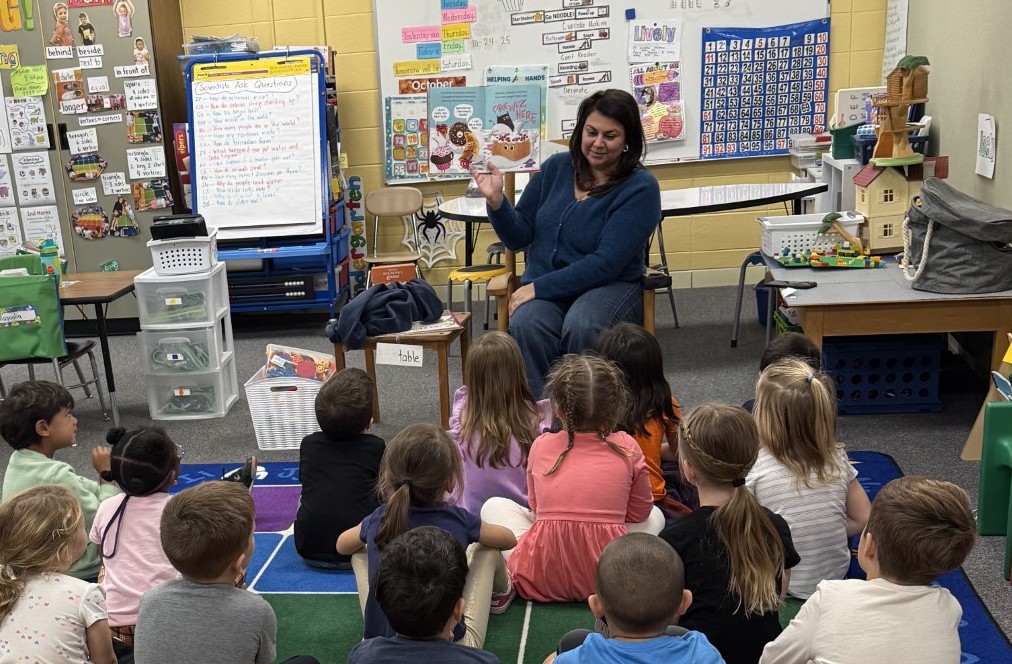How Generative AI Can Propel Education
Educational innovation exists, but it can move slowly at times. Does generative AI have what it takes to push the envelope in a notoriously lacking space?

Teachers have successfully integrated AI into many aspects of education, including grading, planning lessons, and even tracking attendance, however, there is still some apprehension. Many schools and districts have put in place formal AI guidelines and policies to help steer educators in the right direction, but it doesn’t always result in full AI adoption.
Pete Just, Executive Director on the Indiana CTO Council, discusses the intricacies of approaching AI in education, AI adoption strategies, and how to assuage the fear that comes with AI use in the classroom. Just recently presented on this topic at the spring CoSN conference.
The Adoption Curve for AI
When tech innovation is added to education, the adoption process can be swift or it can be measured. AI, as amazing as it can be at times, seems to be taking more of a measured trajectory in schools.
“I thought we would follow a much more aggressive adoption curve because of the transformative nature of what generative AI brings to the table,” says Just. "But it also brings concern, and we need to mitigate that concern. What I mean by the general adoption cycle is that everyone is waiting for the other person to make the change and then they watch what they're doing and they say, ‘Okay, that's not too bad. That's got some benefits. We might want to do that.’”
Many are waiting for the “right” way to use AI in the classroom to present itself. Whereas some are willing to take the leap into AI use, many are hesitant when it comes to altering how we teach students. One of the biggest challenges is shifting this mindset so that students can gain practical experience using AI as it will undoubtedly be a significant part of their future careers.
Changing The “Using AI Is Cheating” Narrative
If a student uses AI for an assignment, is it technically a form of cheating? Can it be labeled as plagiarism? Does it hurt a student’s ability to think critically or problem solve?
”If you are not helping your students understand what we're talking about with generative AI, what it could bring, how to use utilize it, how to think critically about asking those questions or prompting, how to think critically about reviewing the answers or the output, you are doing your students a disservice,” says Just.
Tools and ideas to transform education. Sign up below.
What about those who are using AI in the classroom effectively?
“They don't see it as cheating. They see it as amplifying,” says Just. “And so what we have to do is we have to get ahead of that. What we're doing is helping school districts think strategically about how they can amplify what they do within their school district and really turbocharge it in a lot of ways, while also protecting student data and putting guard rails in place.”
AI has become a tool that can help bring students closer together in terms of academic achievement. Crafting ideas, bridging understanding gaps, and enhancing participation can all be supplemented with the addition of AI, as long as teachers demonstrate how to do so effectively and ethically.
The Role Of Administrators in AI Adoption
Should an administrator using AI in their personal life promote its use in a school or district regardless of existing guidelines? What exactly should administrators do when it comes to AI use in education?
“There’s a group of people who are in charge,” says Just. “And their way of taking charge is by having the conversations with their school board, by having the conversations with their community stakeholders, by having the conversations with their teachers, and then determining what is the feeling in our school community about where we should go with this.”
Many education decisions can be held up due to unwillingness to act, so keeping open lines of communication with stakeholders regarding AI can help guide the conversations that are needed. As Just puts it, AI can do amazing things for teachers, but they need the support of their decision-makers to get where they want to go.

Michael Millington is a senior staff writer for Tech & Learning. A writer and editor with over a decade of experience, his focus on bringing actionable information to those in need is the driving force behind his work. When not researching new advancements in technology, Michael likes to practice his Italian and train his dog Cyril.
